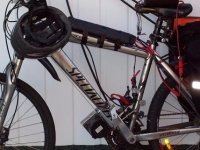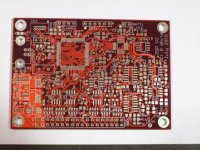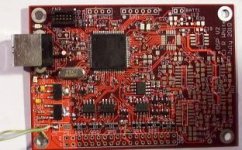Ricky_nz
10 kW
Hi All,
After experimenting with an 300W elation kit and a 1000W rear golden motor with magic controller
I have decided what I like and don't like and this will feed into this new project.
The V2 elation kit suffered several issues:
1) Cranks keep bending (aluminum too weak)
2) early failure of battery just out of warranty :-(
3) freewheel failed
4) Throttle slow ramp step thing is intolerable. (must get round to putting a different throttle on.

I still use the elation kit regularly to get to work and it works ok with a 7s2p turnigy 20C pack. much less votage sag.
I have swapped out the freewheel to a sick bike parts one but astill want to do something to the throttle.
This bike is great with its hayes hydro brakes so the new project must have hydro disk brakes. The elation is not too bad for 300w peak 750W but you are always banging through the gears and I have noticed that it does contribute to cluster wear because of the number of gear changes to deal with the very narrow power band.
The golden motor bike I originally run 4 * 18Ah SLA in the frame and it handled ok but it was heave and poor range. V brakes are not ideal for a bike like that. It runs better now i swapped it over to 14s2p 20C 5Ah turnigy ( I use half of the pack for the elation kit and 14s fits the voltage range of the controller. I don't like the heavy hub in the wheel but it is a reliable setup but adjusting v brakes every other week gets old!

If you are even thinking of lead stop! go no further. you must use Lipo! I brought the lead when the nz doller was dirt but now it better and I have discover hobbyking lipo there is no turning back!
The new project
This project is about a bike that accelerates fast and is reliable.
The drive will be 219 chain on the left to the break disk mount with a chain primary reduction of 2 and secondary of around 8.
It will be LiPo powered approx 1KWh or more if i can afford it.
The bike is a keewee stealth dirt jump frame with manitou 200mm suspention forks.
This won't be a fast build.
I'm more into software and electronics so some of the mechanical stuff is net to me but i'll get there.
I'm putting up the build log to keep me motivated to complete the project and to hopefully share ideas etc.
I have just had the first PCBs for my controller come in so I'll post about that shortly
This build will be supervised by Leica the mad oriental cat.
After experimenting with an 300W elation kit and a 1000W rear golden motor with magic controller
I have decided what I like and don't like and this will feed into this new project.
The V2 elation kit suffered several issues:
1) Cranks keep bending (aluminum too weak)
2) early failure of battery just out of warranty :-(
3) freewheel failed
4) Throttle slow ramp step thing is intolerable. (must get round to putting a different throttle on.

I still use the elation kit regularly to get to work and it works ok with a 7s2p turnigy 20C pack. much less votage sag.
I have swapped out the freewheel to a sick bike parts one but astill want to do something to the throttle.
This bike is great with its hayes hydro brakes so the new project must have hydro disk brakes. The elation is not too bad for 300w peak 750W but you are always banging through the gears and I have noticed that it does contribute to cluster wear because of the number of gear changes to deal with the very narrow power band.
The golden motor bike I originally run 4 * 18Ah SLA in the frame and it handled ok but it was heave and poor range. V brakes are not ideal for a bike like that. It runs better now i swapped it over to 14s2p 20C 5Ah turnigy ( I use half of the pack for the elation kit and 14s fits the voltage range of the controller. I don't like the heavy hub in the wheel but it is a reliable setup but adjusting v brakes every other week gets old!

If you are even thinking of lead stop! go no further. you must use Lipo! I brought the lead when the nz doller was dirt but now it better and I have discover hobbyking lipo there is no turning back!
The new project
This project is about a bike that accelerates fast and is reliable.
The drive will be 219 chain on the left to the break disk mount with a chain primary reduction of 2 and secondary of around 8.
It will be LiPo powered approx 1KWh or more if i can afford it.
The bike is a keewee stealth dirt jump frame with manitou 200mm suspention forks.

This won't be a fast build.
I'm more into software and electronics so some of the mechanical stuff is net to me but i'll get there.
I'm putting up the build log to keep me motivated to complete the project and to hopefully share ideas etc.
I have just had the first PCBs for my controller come in so I'll post about that shortly
This build will be supervised by Leica the mad oriental cat.





